A Grass-Roots Approach to Connecting NATO Forces
Europe is nervous. A nationalistic and revanchist Russia threatens security, and post-Cold War downsizing of U.S. forces across the continent leaves it vulnerable. At one point, 300,000 soldiers stationed in Europe were tasked with the mission of deterring the Soviet Union. Today, that number hovers around 30,000. It is no surprise, then, that senior U.S. and allied military leaders have placed a renewed emphasis on strengthening NATO and improving its battlefield capabilities. One of the most effective ways to fortify the alliance is through unit-level partnerships.
Case in point: the unique grass-roots interoperability exercise that U.S. soldiers from the 39th Strategic Signal Battalion (SSB) organized with the 44th Expeditionary Signal Battalion (ESB) and the Belgian 6th Communication and Information Systems (CIS) Group. Elements from the three signal battalions gathered at an abandoned Cold War-era airstrip deep in the forest of Belgium’s Ardennes region last June. The multinational team converged around a tactical satellite terminal, chatter pricking the air in three languages—English, Flemish and French, with only a handful of troops speaking more than one. But this did not impede progress.
No operations order dictated plans. No higher headquarters specifically had directed anyone to assemble in this way. What occurred was mission command in action in what is now known as—within a small Europe-based military circle at least—Operation Combined Lightning. The common goal of a simple but interesting interoperability experiment was to directly link a U.S. satellite terminal with a Belgian satellite terminal. Exercise planners agree this has probably never been attempted—certainly not in any of the 200-plus NATO and U.S. exercises recently conducted in Europe.
While the technical achievement was modest, the operation proved at least four significant points. First, U.S. and Belgian satellite terminals are interoperable. Second, this feat opens the possibility of using the Belgian anchor station as an operational alternative to Europe’s Regional Hub Node (RHN). The RHN enables remote tactical satellite terminals to reach secured and unsecured Internet and voice communication networks across the globe. But it also is overburdened with users and is the single point of failure during NATO exercises. Third, the mission command philosophy is extremely effective when all key principles are in place. By simply having a clear understanding of a commander’s intent, subordinate leaders can use disciplined initiative—action in the absence of orders or when orders no longer fit a situation—to achieve the desired results. Fourth, microcollaborations between allied nations are exactly what Europe needs now. They open doors to a whole new genre of options to advance communication interoperability.
Despite the resounding success of the exercise, forces had to overcome several hurdles—motivation, policy and technical compatibility issues—to achieve fluid communication between nations. During NATO exercises, each country usually builds its own organic communication network. At the enterprise level, units achieve interoperability when each enclave joins the common mission network. While valuable, this approach misses an opportunity to experiment with the direct compatibility of signal equipment and systems. This is where small multinational collaborations can make a big difference.
The starting point is gaining leadership buy-in, but earning trust can be slow at first. Initial key meetings with the commander of the Belgian 6th CIS Group, for example, began in June 2015—a full year before the exercise. Rather than jumping right into talks about technical interoperability, U.S. forces forged lasting relationships by focusing first on social engagements to build bonds between the units. To gear up for the bilateral exercise, soldiers exchanged unit briefs, observed field exercises and even attended each other’s formal military balls. By the time they started serious technical talks, many considered themselves friends. Social activities build trust, friendship and ultimately achieve the buy-in and motivation to pursue technical communications integration—a result exclusive to the grass-roots approach that cannot be replicated during a joint exercise period alone.
Accomplishing this result is not easy. Policy issues relating to the release and protection of information can hamper progress. Each nation maintains its own information networks and usually restricts other nations from accessing them. Without a common access network, information sharing is not possible. Traditionally during NATO exercises, episodic mission networks allow common access, but no enduring network exists in Europe. This challenges units attempting smaller collaboration efforts. Pursuing policy changes would have stymied Operation Combined Lightning efforts.
The team’s solution was simple, elegant and ostensibly unique. It sidestepped policy issues and let the Belgians configure the 44th ESB’s tactical satellite terminal as a transport mechanism for its own unclassified network. Troops tested equipment compatibility without the policy problems associated with mixing networks. On the Belgian satellite terminal, units used a commercial Internet link with a virtual private network (VPN) solution. By avoiding policy conflicts, the team could focus on the real goal of exploring interoperable communications.
At the heart of this challenge was technical compatibility. Unfortunately, allied communication equipment does not always adhere to standards for frequency ranges, waveform types or multiple access methods. This issue affects everything from satellite terminals to line-of-sight radios. And security and encryption, essential elements of modern tactical communications, add complexity and present problems. Even if allies overcome technical difficulties at the physical and datalink layers, software incompatibilities muck up the process. Grass-roots interoperability experiments identify these issues and start progress toward solutions.
During planning sessions, the teams learned that the Belgian army is among those that use the same high-capacity Wideband Global SATCOM (WGS) system as the U.S. Defense Department. This disclosure opened new realms of possibilities, and all three units quickly began sharing information to achieve the goal of establishing a direct connection between a U.S. Army tactical satellite terminal and the Belgian RHN.
In the end, their work paid off, and they made a connection. The exercise proved that the United States could loan allied nations a Satellite Transportable Terminal to extend their tactical warfighting networks. The 39th SSB also connected U.S. nonclassified Internet protocol router (NIPR) networks using a Belgian satellite terminal, an accomplishment that created a secure, tunneled VPN solution in a flyaway kit configuration. This VPN connection let U.S. personnel operate on the NIPR network while embedded in the Belgian command post.
But the exercise also showed how soldiers can unleash their creativity through mission command. Although attention in Europe now has shifted to larger NATO exercises, the 2nd Theater Signal Brigade commander has challenged the five Europe-based battalions to explore—and solve—technical interoperability issues with an allied partner. This general mission order is an extremely powerful approach that gives units ample latitude to probe solutions. Working on the same order, each signal battalion pursues unique partnerships.
There are a number of recent success stories. The 509th SSB, for example, collaborated with Italian signal regiments and conducted the first test of a point-to-point video teleconference bridge between U.S. and Italian units. The 44th ESB worked with British signal units and deployed equipment to the United Kingdom for an exercise with a British signal regiment. The 52nd SSB has banded with German and French signal units for numerous team-building events. The 102nd has partnered with a German signal unit to explore high frequency radio interoperability.
Each unit blazes a unique path with partners to improve strategic goals and strengthen the alliance in Europe.
Maj. James Lacovara, USA, is the executive officer for the 39th Strategic Signal Battalion (SSB). He helped lay the foundation for the partnership with the Belgian 6th Communication and Information Systems (CIS) Group when he was the battalion’s operations officer. Capt. Phil Gilchrist, USA, is an evaluation officer for the Army Test and Evaluation Command. He spearheaded the effort to gain technical interoperability with the 6th CIS Group while serving as headquarters commander for the 39th SSB. The views expressed are their own.
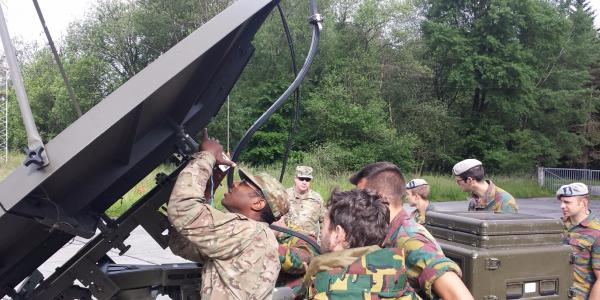
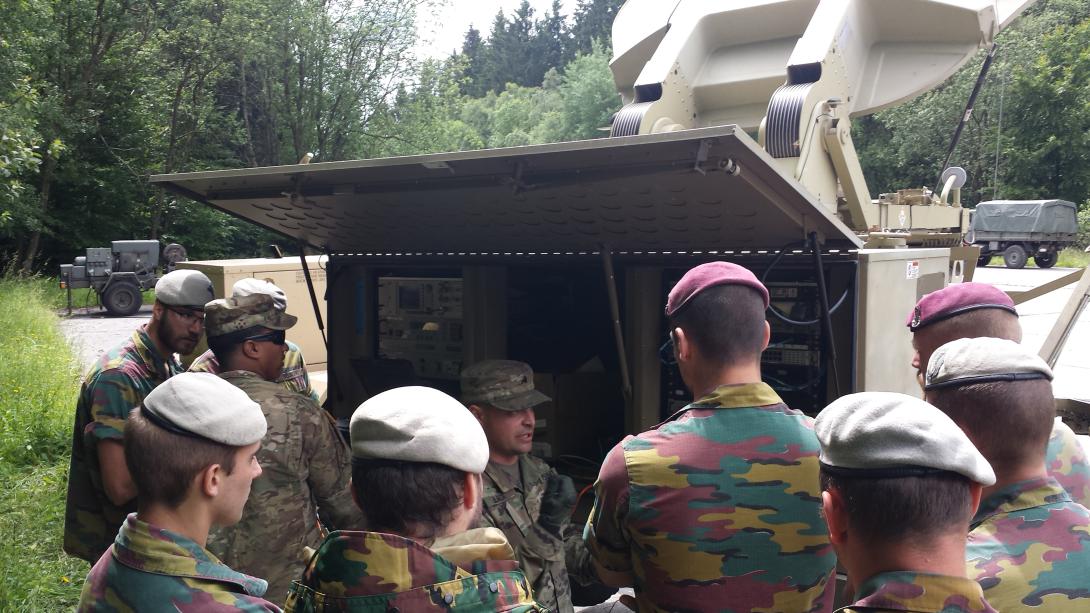

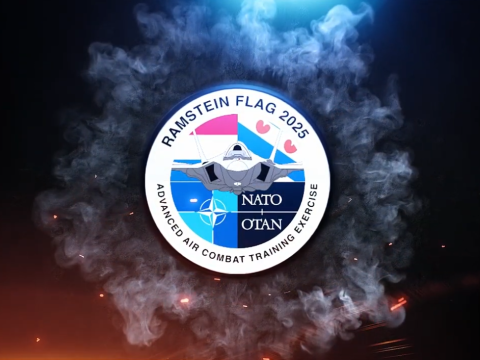
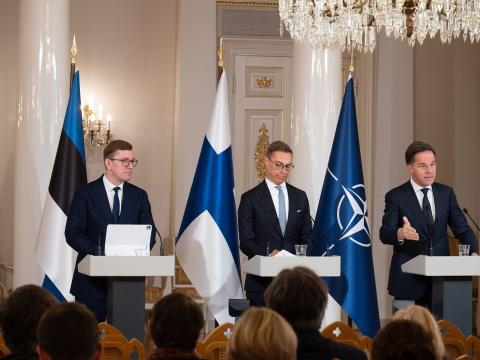
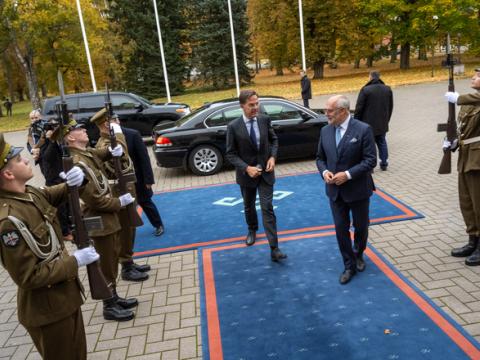
Comment
Flag photo
On page 32 of the August issue, there is a picture of US Army personnel from the 39th Strategic Signal Battalion setting up an Internet router to a Belgian army satellite terminal. The photo includes a flag pole in front of the van with the Belgian flag on top, and the US Flag beneath it. Members of this unit (and the photographer) need remedial flag code training. The US Flag is NEVER flown below any other flag. Period.
6 CIS engagement
This was a Belgian exercise on Belgian land. We were merely guests and honored to be invited and conduct this exercise with our allies. The vehicles you see in the photo are Belgian Army vehicles.
Comments